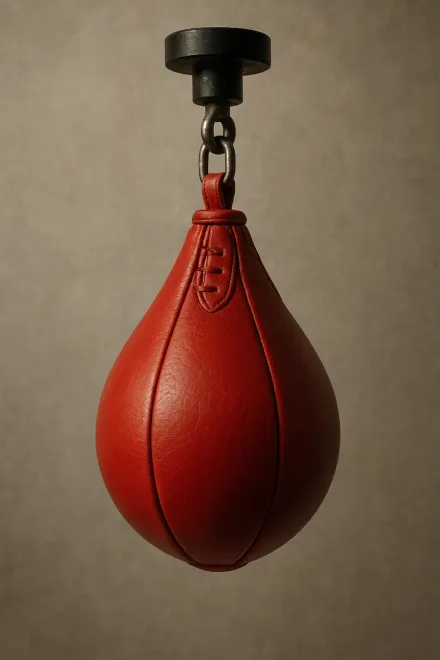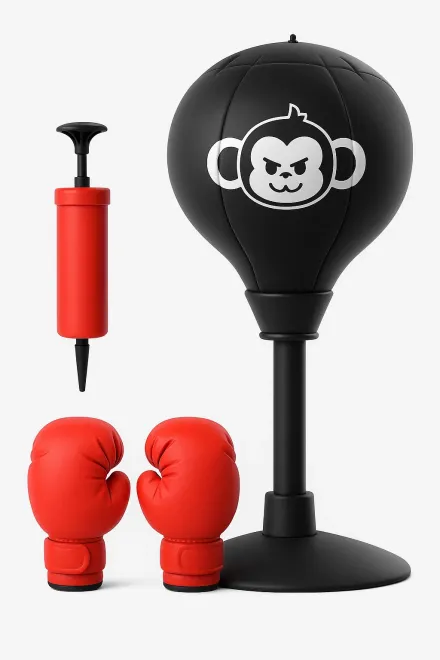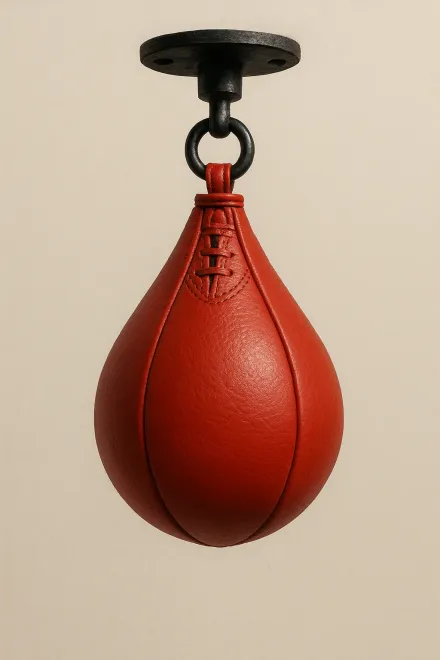Small boxing bags
Small boxing bags are a practical, versatile option for those who want to train at home or in tight spaces without sacrificing a solid workout. Unlike large models that need high ceilings or robust frames, small bags fit flats, studios, and rooms, letting you improve strength, coordination, reflexes, and cardiovascular endurance. In addition, they are more affordable, easy to install, and typically suit different experience levels, from beginners to more advanced users looking for complementary sessions. In this guide, we explain everything you need to know about them: types, advantages, usage tips, and recommendations to choose the right model.
See small boxing bags on Amazon
What is a small boxing bag and what is it for?
A small boxing bag is a training accessory designed to practice punches, kicks, or combat movements in limited spaces. They generally have a lower height than traditional bags and a lighter weight, which makes them an excellent alternative for those without a full training room or a complete home gym.
These bags let you train technique, improve hand–eye coordination, work on cardio, and relieve stress effectively. In addition, they are ideal for both adults and children, as there are models adapted to different ages and resistance levels.
- Practicality: easy to install and take up little space.
- Versatility: suitable for boxing, kickboxing, muay thai, and fitness.
- Savings: usually cheaper than large bags and do not require heavy supports.
In short, a small boxing bag is a practical investment to train without space limitations.
Types of small boxing bags
There are several types of small boxing bags on the market, and each suits a specific training style. Your choice will depend on the available space, the discipline you practice, and personal preferences.
- Hanging bags: The most traditional; they hang from the ceiling or wall mounts. Even when small, they require proper fixing to avoid excessive movement.
- Freestanding or base bags: They include a base filled with sand or water. Very practical because they need no installation and are easy to move.
- Punching balls or speed bags: Used mainly to improve reflexes, accuracy, and speed. Very common in classic boxing training.
- Kids’ bags: Designed for children, usually lighter, with soft materials and adjustable heights.
When choosing a small boxing bag, consider the training you will do. If you want strength and power, a hanging bag is advisable; if you prioritize mobility and convenience, a base model may be better; and if you want to work on reflexes and technique, a speed bag is the ideal option.


Advantages of training with small boxing bags
Training with a small boxing bag offers multiple physical and mental benefits. These models let you keep a steady exercise routine without going to a gym, which means convenience and time savings.
- Cardio boost: High-intensity sessions with a small bag help burn calories and strengthen the heart.
- Coordination and reflexes: Being more dynamic and light, small bags demand precision on every strike.
- Less space: Perfect for flats, studios, or small rooms where a large bag would not be viable.
- Portability: Many models are easy to move and can be stored when not in use.
- Accessibility: Options exist for all ages and levels, from beginners to experts.
Moreover, training with small bags is ideal to release tension, improve focus, and foster sporting discipline at home. This makes them a complete tool for both fitness and emotional well-being.
Tips for choosing a small boxing bag
Selecting the right small boxing bag can make a big difference in your training. To decide well, consider the following aspects:
- Material: Synthetic leather or vinyl bags are durable and easy to clean. For extra longevity, choose reinforced materials.
- Weight: A bag that is too light will swing excessively, which can be annoying. Find a balance based on your strength and training level.
- Height and size: Choose a bag proportional to your stature. For adults, it should reach at least torso height; for kids, an adjustable model is best.
- Filling: It may be shredded fabric, foam, or even water in base models. The choice affects hardness and rebound.
- Available space: With limited space, a freestanding bag can be more practical than a hanging one.
Noise level also matters. If you live in an apartment, base bags usually create less vibration than hanging ones. Finally, consider your goal: for fitness and cardio, you do not need a very heavy bag; but if your focus is strength and technique, invest in a robust model.
A good tip is to read user reviews and check brand reputation before buying. That way you ensure a reliable product that meets your expectations.
Training routines with small boxing bags
One major advantage of small boxing bags is that they allow varied, effective routines even in limited spaces. Here are some workout ideas:
- Cardio-box: Strike the bag in 2–3 minute intervals at max intensity, alternating with short rests. Ideal for quick calorie burn.
- Punch technique: Dedicate sessions to basic combos like jab, cross, uppercut, and hook. Small bags are great for speed and accuracy.
- Reflex training: Use a speed bag or punching ball to improve hand–eye coordination and agility.
- HIIT circuit: Alternate bag rounds with bodyweight moves like push-ups, burpees, or squats.
- Kids’ training: Children can use light bags to learn discipline, improve coordination, and have fun while exercising.
Additionally, you can complement the work with jump ropes, resistance bands, or light dumbbells. This helps build a more complete and balanced routine.
The key is consistency and exercise variety to avoid stagnation. Even with a small boxing bag, you can progress and see significant gains in strength, endurance, and overall well-being.
Frequently asked questions about small boxing bags
Is a small boxing bag suitable for adults?
Yes, many small bag models are designed for adults. Although they do not have the same size or weight as a pro bag, they are ideal for cardio, technique, and moderate-strength training. The key is choosing a model with the right resistance and height for your stature and level.
Can a small boxing bag be installed in an apartment?
Yes, in fact small boxing bags are perfect for apartments. If you do not want holes in ceilings or walls, choose a freestanding bag, which you fill with water or sand and place directly on the floor. They also tend to create less vibration than hanging models.
What’s the difference between a small and a large bag?
The main difference is size, weight, and use. A large bag is intended for power sessions and advanced techniques, while a small bag is more versatile and practical for tight spaces. They are also more affordable and easier to transport.
Are small boxing bags good for children?
Yes, there are models designed specifically for kids, with softer materials and adjustable heights. They are an excellent way to introduce children to the sport, improve coordination, and teach discipline while having fun.
What filling is best for a small bag?
It depends on your training. Shredded fabric fillings are softer and safer, ideal for beginners or kids. Foam offers medium rebound, while water or sand in base models provides greater stability. The choice depends on your level and goals.
How much space do I need to use a small boxing bag?
Generally, a 1.5 to 2 meter clearance around the bag is enough to move comfortably. This makes them ideal for flats, studios, or small rooms. The important thing is to have room for basic footwork and to avoid hitting furniture.
Can a small boxing bag help with weight loss?
Yes, training with a small bag can be very effective for weight loss. Working at high intensity burns many calories and improves cardiovascular capacity. Combined with a balanced diet, you will notice results within a few weeks.
Is a hanging bag or a freestanding bag better?
It depends on your needs. A hanging bag offers more realistic striking and is usually more stable in the long run, but it requires installation. A freestanding bag is more convenient, needs no drilling, and is easy to move, though it may bounce a bit more on impact.
